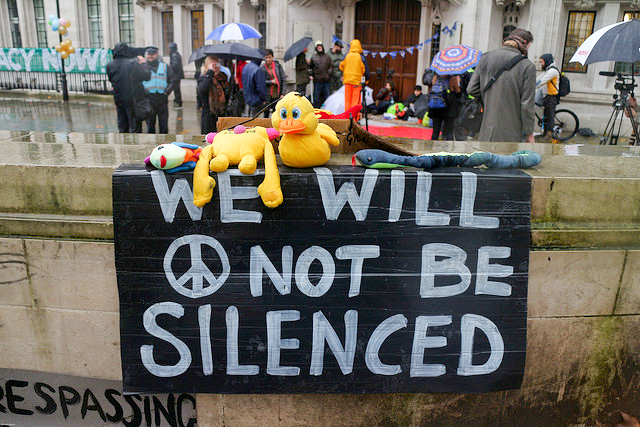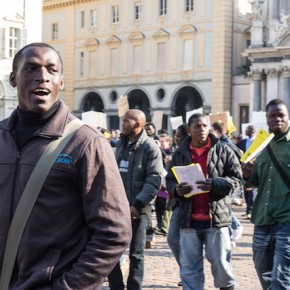The Green Party has long been a focal point for left-of-centre opinion in Britain. Against the affectations of Blairism, with its claim on the progressive centre-ground running empty after the invasion of Iraq, the Greens looked like the kind of party Labour ought to be. Yet it’s only recently that the Greens have moved onto the mainstream stage. Natalie Bennett has been given more airtime than her predecessor Caroline Lucas. This has put the Party under more media scrutiny than ever before.
For many years, the Greens acted as a pressure group for a variety of environmental objectives. Now the Green Party seems to be undergoing a major transition in its history, namely the move from a pressure group to a national political force. It took a quarter of a century for the Greens to reach this point in their history. Whether or not they can rise to the challenge could make them the leading progressive force in UK politics.
However, as we have seen in recent weeks, the Greens bring their own limitations and baggage. Natalie Bennett has proven clumsy with public relations. To the layman the planks in the platform appear weak, ill-defined, and ill-conceived. Policy commitments to expand social housing and implement a citizen’s basic income have drawn scorn from the gutter press. Nevertheless, the left-wing smorgasbord remains appetising for many disillusioned voters.
In just one day in January 2015, the membership grew by 2,000 people. The number of Green members has exceeded UKIP and may be approaching 60,000. Meanwhile the Conservatives and the Labour Party have seen their membership rates decline for years. The mainstream now relies primarily on polls, focus groups and psephology to draw up policy, whereas UKIP and the Green Party think out policy with its activist core.
The Green Surge
Once a traditionally middle-class party the Greens now soaks up much of the young vote and especially the votes of students and graduates – who face a more precarious future than ever before. The social base of the movement is expanding outside of the middle-class and into the new sections of the working-class. In the past the students would have been the first entrants of the middle-class, but that is no longer guaranteed. But this is no substitute for the kind of linkages which make a class party.
With the exception of RMT, the Green Party can’t mobilise the trade union movement behind it. The environmental party now stands out for its commitment to expansive social programmes in an age when the politics of frugality prevails at the centre-ground. The conditions favour rogue challengers to the status quo, both from the Left and the Right, but it may well be easier for UKIP to absorb disenchanted white working-class votes than the Greens. It might not be clear until the dust settles after May 7th.
The current Green leader Natalie Bennett succeeded Caroline Lucas in 2012. The grapevine has it that Bennett was brought in to reorganise the party and prepare for the next general election. She was not expecting, or expected, to be waging this battle. To try and face the challenge, the leadership have put forward the largest number of candidates in the party’s history. But the performance of the leadership has been undeniably lacklustre in terms of argument and presentation.

At the same time, the Green programme retains notable ambiguities, such as the citizen’s basic income. It’s a much more modest proposal than people think. The neoliberal ideologue Milton Friedman made a conservative case for a form of a basic income back in the 1960s. The Friedmanite model would be a minimal income of around $3,000 a year, combined with a flat-tax regime. It would provide a fiscal alternative to progressive taxation and a welfare state leaving individuals to compete with one another in the market.
Importantly, the Greens propose to deflate the housing market by expanding social housing and outbidding London’s landlords. This is consistent with the more constrained version of the basic income. £72 a week is not much more than Jobseekers Allowance, which ranges from £56 to £60 a week for most people. The key difference is that the payment would be unconditional and universal in scope. It might work to eliminate the popular disdain for benefit claimants as ‘shirkers’, ‘scroungers’, and ‘drainers’.
On the other hand, the basic income is not means-tested to save time and money on bureaucracy. The potential reorientation would be immense as the universal system would substitute for benefits and pensions. It could potentially leave the elderly, the disabled and mentally-ill people on less money than under the current regime. The economist Paul Mason has argued that the plan could serve to radically restructure the labour market. He argues it could kill-off low paid work, embolden volunteers and secure comfort for the majority.
No Risk, No Reward
It’s a proposal with great possibility, but also great risk. It would enable greater automation and innovation and force up wages putting the squeeze on profits. But it would likely perpetuate a precarious existence in other ways. It wouldn’t do much to change the place of Chinese and Indian labour in the global economy. Nevertheless, the proposal retains its appeal on the most progressive libertarian grounds. Yet it’s also the case that the position of the Greens serves to emphasise just how right-wing the establishment has become.

In 1979, the top rate of income tax was 83%, and the Thatcher government had lowered it to 60% by 1990. It’s now considered a ‘radical’ position for Natalie Bennett to call for a return to the 60p rate, while others squirm about the 50p rate. Long gone are the days when politicians could argue for a 100% super-tax, a massive redistribution of wealth and structural changes to production. The focus on redistribution shouldn’t be confused for production and what it means to change the form of economy we have.
This election could make or break the Green Party. Brighton’s MP Caroline Lucas may be held responsible for the failings of Brighton Council, where some Green councillors have collaborated with Labour to pass austerity measures. She won in 2010 with an 8.4% swing against Labour. So it seems plausible Lucas will keep her seat. But if she doesn’t, it will be a major defeat for the party, particularly if it can’t make gains in any other areas.
Undeniably, the Greens have held onto the anti-austerity position in England, while the SNP has seized the same ground in Scotland. For the progressive crowd, Natalie Bennett strikes the right cords, but falls short on detail. Caroline Lucas has maintained a credible presence in the House of Commons taking the stand against the intervention in Syria. The Greens are still up against the inequity of the FTPT system, which could easily strangle their chances.
This is a long-term struggle for Green activists and supporters. It’s not just a question of opposing austerity today. It’s about what kind of economy we want in the future, and it will take a multitude of forces to coalesce for a grand transformation. It would be a mistake to see Natalie Bennett as the harbinger of such a transition. But whether or not the Greens can embed themselves in Parliament will shape the English Left for years to come.
Photographs courtesy of Steve Eason and Global Justice Now. Published under a Creative Commons license.





